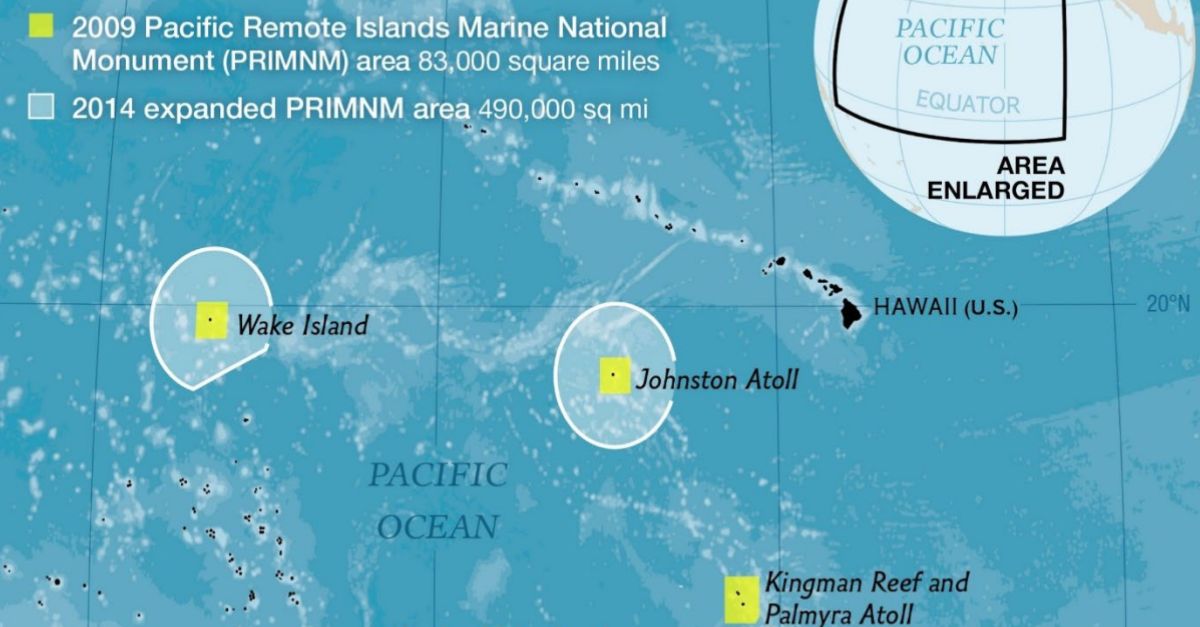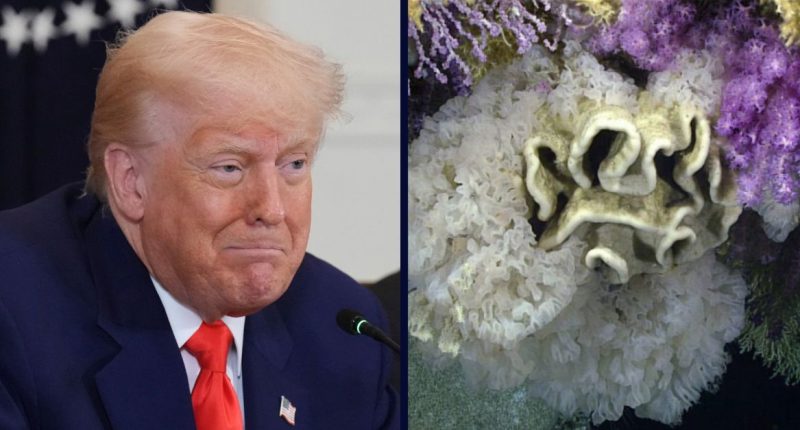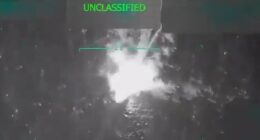Share this @internewscast.com
Left: President Donald Trump addresses an audience at a Make America Healthy Again (MAHA) Commission Event held in the East Room of the White House on Thursday, May 22, 2025, in Washington. (AP Photo/Jacquelyn Martin) Right: Corals and Sponges in Monument Expansion near Jarvis Island (NOAA Office of Ocean Exploration and Research)
Environmental advocacy groups have initiated a lawsuit against the Trump administration due to an executive order that reduces protections for Pacific Ocean marine ecosystems.
The Pacific Islands Heritage Marine National Monument was created in 2009 by former President George W. Bush during his last days in office. Five years later, former President Barack Obama enhanced the monument’s protections. Nonetheless, a proclamation in April by President Donald Trump diminished the 2014 protections to boost U.S. commercial fishing activities in the central Pacific Ocean.
Love true crime? Sign up for our newsletter, The Law&Crime Docket, to get the latest real-life crime stories delivered right to your inbox.
The Conservation Council for Hawaii, the Center for Biological Diversity, and Kapaʻa, an “unincorporated association of Native Hawaiian cultural practitioners,” are seeking to stop the president from having his way.
“President Trump’s proclamation threatens to destroy one of the world’s last healthy and wild ocean ecosystems,” Jonee Peters of the Conservation Council for Hawaii said. “Many of these creatures and areas are culturally important to the people of Oceania, for traditional and modern navigation, and as a valuable food source.”
The plaintiffs argue Trump’s order and subsequent actions taken by federal departments including the U.S. National Marine Fisheries Service are illegal and would decimate the marine resources in the aquatic region.
Following Trump’s directive, the National Marine Fisheries Service announced that commercial fishing in the region limited to areas outlined by Obama was “no longer prohibited.”
Bush’s 2009 proclamation safeguarded the areas within 50 nautical miles of Wake, Baker, Howland, and Jarvis islands, Johnston and Palmyra atolls, and Kingman Reef “for the care and management of the historic and scientific objects therein.” Obama’s 2014 action expanded the protections to 200 nautical miles around Jarvis Island, Wake Island and Johnston Atoll.

2009 Monument Creation and 2014 Monument Expansion
(Credit: National Geographic)
The lawsuit filed on Thursday argues the monument expansion “provides vital habitat and foraging areas” for tuna, turtles, sharks, seals, seabirds, and additional species designated as endangered or threatened under the Endangered Species Act. The groups also point to the scientific importance of the waters and how they “provide a baseline comparison” for research that “monitors and evaluates impacts of global climate change, including benchmarking coral bleaching and ocean acidification.”
The plaintiffs are seeking injunctive relief to stop Trump administration officials from carrying out actions that go against the 2014 order, and they want the U.S. District Court in the District of Hawaii to rule that Trump “exceed[ed] his authority” under the Antiquities Act of 1906, which “provide[s] general legal protection of cultural and natural resources of historic or scientific interest on federal lands.”
Trump, on the other hand, in his April proclamation, argued that “appropriately managed commercial fishing would not put the objects of scientific and historic interest” that the monument protects at risk.
His directive tracks with much of the “America First” agenda he has rolled out since his return to office in January, as he has argued that increased regulation and prohibitions have hampered American workers and enabled foreign competitors to gain an advantage.















